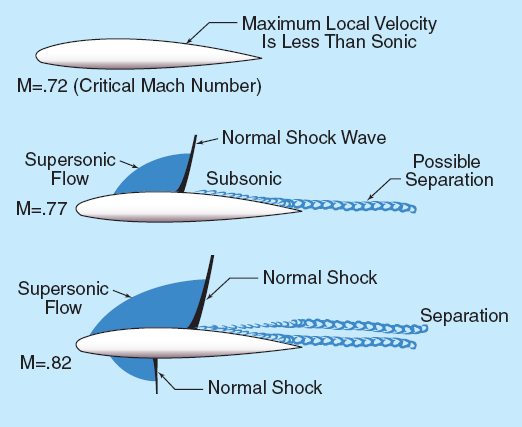Dave probably meant this as a joke. On another forum another poster asked other factors effecting accuracy besides tuning. I will leave tuning to Varmint Al, Bill Calffee, Earnest Martin and Hopewell. One of the external factors asked about was the sound barrier. So I assumed that Dave was building on a previous post. Wrong I guess but here is what I planned on adding to that discussion.
The Noodle and other Bloops offer enhanced accuracy. The theory is this: (note I said theory.) Bloops and Noodles offer a undisturbed column of air to let the gases escape and not disturb the bullet's initial flight. They may mitigate turbulence of exiting bullet out the muzzle. The bullet is at it's highest velocity exiting the muzzle. I have already shown a shock wave preceding a .22 projectile.
The exact speed of sound depends on the temperature of the air. At sea level with a temperature of 70 degrees, sound travels at about 1,128 feet per second. As temperatures fall, air becomes denser and sound travels slower. When a bullet approaches and first passes this velocity, airflow severely buffets it. The outer edge of this transonic zone, if we go with the 1,128 fps at 70 degrees, is between about 902 and 1,466 fps.
Glen Weeks of Winchester Ammunition says a bullet that does not reach the speed of sound is much less affected by air turbulence. "A shadow graph of a subsonic bullet in flight shows a shock wave being pushed in front of the bullet and flowing around the bullet," Weeks says. "But as a bullet transitions from subsonic to supersonic, the shadow graph shows the bullet piercing the shock wave and the shock wave actually adhering somewhat to the bullet." Weeks says the shock wave created at these transonic velocities causes all sorts of turbulence. That turbulence can destabilize a bullet and throw it somewhat off course.
Read more:
http://www.gunsandammo.com/content/super-subsonics?page=1#ixzz1GFbuFxce
One the features of the Eley EPS bullet is it's ability to reduce turbulence hence have greater stability. It operates as an airfoil with a higher critical Mach Number. See effect of exceeding critical Mach in illustration above. Notice the transonic range begins much below the speed of sound.
The controlled expansion effect just after the muzzle may shape the wave in front of the bullet lessing turbulence. Muzzle blast dynamics are very interesting.





